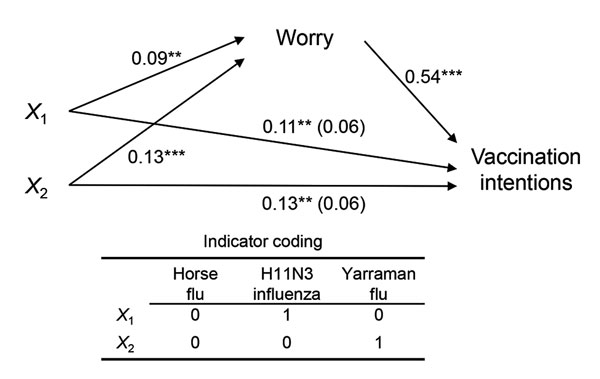Volume 23, Number 8—August 2017
Research Letter
Effects of Influenza Strain Label on Worry and Behavioral Intentions
Figure

Figure. Regression coefficients for the effect of influenza labels on worry for infection and intentions for vaccination. Label conditions were dummy coded to estimate the effects of “H11N3 influenza” (X1) and “Yarraman flu” (X2) labels compared with the “horse flu” label. The effect of influenza labels on vaccination intentions, controlling for worry, is in parentheses. **p<0.01; ***p<0.001.
Page created: July 17, 2017
Page updated: July 17, 2017
Page reviewed: July 17, 2017
The conclusions, findings, and opinions expressed by authors contributing to this journal do not necessarily reflect the official position of the U.S. Department of Health and Human Services, the Public Health Service, the Centers for Disease Control and Prevention, or the authors' affiliated institutions. Use of trade names is for identification only and does not imply endorsement by any of the groups named above.